Books by Dragana Antonović
Foraging Assemblages Volume 1, 2021
Front Cover Illustration: Sculpted sandstone boulder named 'Chronos' (inv. no. 5) from Lepenski V... more Front Cover Illustration: Sculpted sandstone boulder named 'Chronos' (inv. no. 5) from Lepenski Vir (National Museum in Belgrade) Back Cover Illustration: Lepenski Vir during excavations (Photograph courtesy of Alan McPherron) CIP -Каталогизација у публикацији Народна библиотека Србије, Београд 903(4)"632/633"(082) 902.2(4)(082) FORAGING Assemblages. Vol.
Foraging Assemblages Volume 2 , 2021

Das Arbeitsgebiet dieses Bandes umfasst im Wesentlichen die heutige Republik Serbien. Darüber hin... more Das Arbeitsgebiet dieses Bandes umfasst im Wesentlichen die heutige Republik Serbien. Darüber hinaus wurden zusätzlich einige Fundstücke aus dem Kosovo aufgenommen, die entweder bereits aus älterer Literatur bekannt sind, oder die in einem serbischen Museum aufbewahrt werden (Nr. 101 A. 192. 363. 412). Insgesamt werden 377 Beile und Äxte sowie 47 Kleingeräte (Nr. 366–412) dokumentiert.
Von diesen Objekten sind 34 bisher unpubliziert und werden in diesem Band das erste Mal vorgestellt. Weitere 16 Objekten finden zwar im Rahmen von Materialanalysen Erwähnung, sind aber darüber hinaus bisher ebenfalls noch unpubliziert und werden hier erstmals abgebildet.
Der Kupferschmuck findet in diesem Band keine Berücksichtigung, da er aus mehreren Gründen eine eigene Publikation rechtfertigt. Zum einen stammen die meisten Funde aus der Nekropole von Mokrin und datieren, ebenso wie der Goldschmuck, in die Bronzezeit. Tatsächlich zählt Bronzeschmuck in Mokrin zu den Ausnahmen. Trotzdem wäre es erforderlich, diese drei Materialgruppen zusammenzufassen, und dann auch den übrigen – zahlreich überlieferten – Bronzeschmuck aus dem Arbeitsgebiet einzubeziehen. Damit wäre der Rahmen dieser Publikation bei weitem gesprengt worden. Zum anderen sind ältere, vinčazeitliche Schmuckfunde aus Kupfer sehr selten. Sie werden jedoch in der Einleitung zu den frühesten Metallfunden (s. S. 21; Abb. 10) kurz vorgestellt und diskutiert. Die Nadel aus Pločnik wurde bereits in einem anderen Band dieser Reihe berücksichtigt. Bei der Auswahl des Fundmaterials für diesen Band standen weniger chron
Book chapters by Dragana Antonović
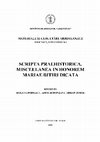
Roxana Dobrescu, Adina Boroneanţ, Adrian Doboş (eds.) Scripta praehistorica : miscellanea in honorem Mariae Bitiri dicata, Târgovişte : Cetatea de scaun, (Materiale şi Cercetări Arheologice, serie nouă, Supplementum I / Institutul de Arheologie „Vasile Parvan”), 2021
The rescue excavations in Batasevo in central Serbia showed that it was a multi-layer site, on wh... more The rescue excavations in Batasevo in central Serbia showed that it was a multi-layer site, on which occupation traces dated from the Early Neolithic, and then from the Bronze Age and the Roman period to the Middle Ages. The most valuable findings and data in the Early Neolithic settlement were provided by the excavations in Makedonska Street, in trenches 2/06, 1/07 and 2/07 where an Early Neolithic layer 1-1.5 m thick was discovered. According to the archaeological material (stone tools, pottery and cult items, objects made of bone, fauna) and dug-in features and houses, it is very certain that during the Early Neolithic period Batasevo was a well-developed settlement, whose inhabitants, aside from husbandry and agriculture, also took part in the production of items made of stone, bone, pottery etc. Ground and abrasive stone tools, according to the choice of the raw materials, manner of making and consumption, repairing and recycling of tools, completely reflects the Early Neolithic technology of production and manner of tool use observed elsewhere in the territory of the Central Balkans. The only remarkable trait is the great fragmentation of the tools, already mentioned, which has been noted so far only at the site of Aria Babi in the Iron Gates, as well as the existence of specialised grindstones for processing stone tools. On the basis of the small area researched so far (35 m1 2), it is not possible to conclude if there was a specialisation of production of certain groups of artefacts, since no workshop was discovered. Cuvinte cheie: industrie litică şlefuită, tehnologie preistorică, reciclare, consum, neolitic timpuriu, cultura Starcevo, Serbia Rezumat: Cercetările arheologice preventive de la Batasevo în centrul Serbiei au indicat prezenţa unui sit pluri-stratificat, cu urme de locuire pornind din neoliticul timpuriu până în epoca bronzului şi apoi din perioada romană până în evul mediu. Cele mai importante descoperiri şi informaţii atribuite neoliticului timpuriu provin din strada Makedosnka, secţiunile 2/06, 1/07 şi 2/07, unde a fost descoperit un nivel neolitic timpuriu de 1-1,5 m grosime. Materialul arheologic (piese de piatră, ceramică şi obiecte de cult realizate din os, precum şi resturi faunistice) şi complexele şi structurile de locuire sugerează că pe durata neoliticului timpuriu Batasevo era o aşezare bine dezvoltată ai cărei locuitori se ocupau alături de creşterea animalelor şi agricultură, şi de producţia de obiecte de piatră, os, ceramică etc. Piesele aparţinând industriei pietrei şlefuite, împreună cu materiile prime folosite, modul de producere şi de consum, repararea şi reciclarea lor, oferă o imagine completă a tehnologiei neolitice timpurii şi a modului de utilizare a uneltelor, asemănătoare cu cea observată în alte părţi din zona de centru a Balcanilor. Singurele caracteristici remarcabile sunt gradul mare de fragmentare al uneltelor (observat şi la Aria Babi, Porţile de Fier) şi existenţa unor piese de piatră specializate pentru producerea uneltelor de piatră. Dată fiind aria relativ mică investigată până acum (35m2) nu putem vorbi despre specializarea producţiei pentru un anumit tip de piese, întrucât nu a fost descoperit nici un atelier. 10 The classification of raw materials used in Batasevo was made by Prof. Vladica Cvetkovic and Prof. Kristina Saric, Faculty of Mining and Geology, University of Belgrade, and it consisted of a macroscopic analysis of the entire material and a microscopic examination of 10 samples (Cvetkovic,
S. Vitezović, M. Radišić, Đ. Obradović (eds.) Arheologija u Srbiji: projekti Arheološkog instituta u 2019. godini, Beograd: Arheološki institut: 59–68, 2021
S. Vitezović, M. Radišić, Đ. Obradović (eds.) Arheologija u Srbiji: projekti Arheološkog instituta u 2019. godini, Beograd: Arheološki institut: 23–34, 2021
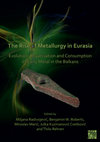
Dimić, V. and Antonović, D. 2021. Ground and abrasive stone tools from Belovode and Pločnik: concluding remarks, in Radivojević, M., Roberts, B. W., Marić, M., Kuzmanović Cvetković, J., and Rehren, Th. (eds) The Rise of Metallurgy in Eurasia: 556–559. Oxford: Archaeopress. Radivojević, M., Roberts, B. W., Marić, M., Kuzmanović Cvetković, J., and Rehren, Th. (eds) The Rise of Metallurgy in Eurasia: 556–559. Oxford: Archaeopress., 2021
Chapter 14 Belovode: technology of pottery production �������������������������������������������... more Chapter 14 Belovode: technology of pottery production ��������������������������������������������������������������������������������186 Silvia Amicone Chapter 15 Figurines from Belovode ����������������������������������������������������������������������������������������������������������������� 199 Julka Kuzmanović Cvetković Chapter 16 Ground and abrasive stone tools from Belovode ���������������������������������������������������������������������������205 Vidan Dimić and Dragana Antonović Chapter 17 Bone industry from Belovode ���������������������������������������������������������������������������������������������������������215 Selena Vitezović Chapter 18 Chipped stone industry at Belovode ����������������������������������������������������������������������������������������������221 Elmira Ibragimova Chapter 19 Chemical and technological analyses of obsidian from Belovode ������������������������������������������������233 Marina Milić Chapter 20 Archaeobotanical evidence of plant use at the site of Belovode���������������������������������������������������236 Dragana Filipović Chapter 21 Animal remains from Belovode ������������������������������������������������������������������������������������������������������249

Dimić, V. and Antonović, D. 2021. Ground and abrasive stone tools from Pločnik, in Radivojević, M., Roberts, B. W., Marić, M., Kuzmanović Cvetković, J., and Rehren, Th. (eds) The Rise of Metallurgy in Eurasia: 382–392. Oxford: Archaeopress. Radivojević, M., Roberts, B. W., Marić, M., Kuzmanović Cvetković, J., and Rehren, Th. (eds) The Rise of Metallurgy in Eurasia: 382–392. Oxford: Archaeopress., 2021
Chapter 14 Belovode: technology of pottery production �������������������������������������������... more Chapter 14 Belovode: technology of pottery production ��������������������������������������������������������������������������������186 Silvia Amicone Chapter 15 Figurines from Belovode ����������������������������������������������������������������������������������������������������������������� 199 Julka Kuzmanović Cvetković Chapter 16 Ground and abrasive stone tools from Belovode ���������������������������������������������������������������������������205 Vidan Dimić and Dragana Antonović Chapter 17 Bone industry from Belovode ���������������������������������������������������������������������������������������������������������215 Selena Vitezović Chapter 18 Chipped stone industry at Belovode ����������������������������������������������������������������������������������������������221 Elmira Ibragimova Chapter 19 Chemical and technological analyses of obsidian from Belovode ������������������������������������������������233 Marina Milić Chapter 20 Archaeobotanical evidence of plant use at the site of Belovode���������������������������������������������������236 Dragana Filipović Chapter 21 Animal remains from Belovode ������������������������������������������������������������������������������������������������������249
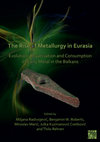
Dimić, V. and Antonović, D. 2021. Ground and abrasive stone tools from Belovode, in Radivojević, M., Roberts, B. W., Marić, M., Kuzmanović Cvetković, J., and Rehren, Th. (eds) The Rise of Metallurgy in Eurasia: 205–214. Oxford: Archaeopress. Radivojević, M., Roberts, B. W., Marić, M., Kuzmanović Cvetković, J., and Rehren, Th. (eds) The Rise of Metallurgy in Eurasia: 205–214. Oxford: Archaeopress., 2021
Chapter 14 Belovode: technology of pottery production �������������������������������������������... more Chapter 14 Belovode: technology of pottery production ��������������������������������������������������������������������������������186 Silvia Amicone Chapter 15 Figurines from Belovode ����������������������������������������������������������������������������������������������������������������� 199 Julka Kuzmanović Cvetković Chapter 16 Ground and abrasive stone tools from Belovode ���������������������������������������������������������������������������205 Vidan Dimić and Dragana Antonović Chapter 17 Bone industry from Belovode ���������������������������������������������������������������������������������������������������������215 Selena Vitezović Chapter 18 Chipped stone industry at Belovode ����������������������������������������������������������������������������������������������221 Elmira Ibragimova Chapter 19 Chemical and technological analyses of obsidian from Belovode ������������������������������������������������233 Marina Milić Chapter 20 Archaeobotanical evidence of plant use at the site of Belovode���������������������������������������������������236 Dragana Filipović Chapter 21 Animal remains from Belovode ������������������������������������������������������������������������������������������������������249

BEAUTY AND THE EYE OF THE BEHOLDER Personal adornments across the millennia, 2020
he Late Neolithic/Early Chalcolithic Vinča culture is known for its rich and elaborate material c... more he Late Neolithic/Early Chalcolithic Vinča culture is known for its rich and elaborate material culture, including numerous objects that had decorations and/or had decorative purposes. Personal ornaments were made from diverse materials, and in this paper we shall focus on ornaments from osseous and lithic raw materials. Raw materials were both locally obtained (bone, antler, teeth and some types of lithic materials) and those obtained through exchange (such as marine shells). Some of the morphological types were made from both material types, and in fact imitate one another, for example the beads and pendants made from whitish mollusc shells and whitish stones. Both lithic and osseous ornaments often indicate important labour and skill investment, and were used for a long time. Unfortunately, the majority of finds come from settlements and therefore include mainly discarded or lost items. However, the necropolises from the sites of Botoš–Živanića Dolja and Gomolava provided some information about the mode of use and especially about the importance of personal ornaments for the members of the Vinča culture communities.
Arheologija u Srbiji: projekti Arheološkog instituta u 2017. godini, 2019
Papers in Honour of Rastko Vasić 80 th Birthday Зборник радова у част 80 г. живота Растка Васића, eds. V.Filipović, A. Bulatović, A. Kapuran, 2019
The site of Donja Strana-Velesnica was one of several prehistoric sites researched within the res... more The site of Donja Strana-Velesnica was one of several prehistoric sites researched within the rescue excavations project “Đerdap II” in the Iron Gates region. It was excavated during the period of 1980–84 by R. Vasić. Remains from the Eneolithic, Bronze Age, Iron Age and historic periods were discovered, and the most important finds come from the horizons belonging to the Early Neolithic Starčevo culture. The possibility of the presence of a Mesolithic horizon was not confirmed with certainty. The Starčevo culture horizon included settlement remains as well as sev¬eral graves, and rich portable material. In this paper, lithic and osseous industries from the Neolithic layers will be presented and discussed within the regional context
Arheologija u Srbiji: projekti Arheološkog institute u 2012. godini, Dragana Antonović, Snežana Golubović, Vesna Bikić (eds.), Beograd 2014
Milenko Bogdanović, Grivac: settlements of Proto-Starčevo and Vinča Culture, 2008
Arheologija u Srbiji: projekti Arheološkog instituta u 2014. godini, ur. I. Bugarski, N. Gavrilović Vitas, V. Filipović


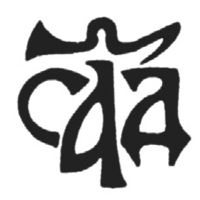







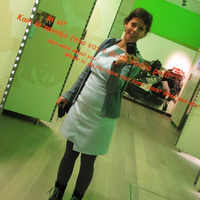
Uploads
Books by Dragana Antonović
Von diesen Objekten sind 34 bisher unpubliziert und werden in diesem Band das erste Mal vorgestellt. Weitere 16 Objekten finden zwar im Rahmen von Materialanalysen Erwähnung, sind aber darüber hinaus bisher ebenfalls noch unpubliziert und werden hier erstmals abgebildet.
Der Kupferschmuck findet in diesem Band keine Berücksichtigung, da er aus mehreren Gründen eine eigene Publikation rechtfertigt. Zum einen stammen die meisten Funde aus der Nekropole von Mokrin und datieren, ebenso wie der Goldschmuck, in die Bronzezeit. Tatsächlich zählt Bronzeschmuck in Mokrin zu den Ausnahmen. Trotzdem wäre es erforderlich, diese drei Materialgruppen zusammenzufassen, und dann auch den übrigen – zahlreich überlieferten – Bronzeschmuck aus dem Arbeitsgebiet einzubeziehen. Damit wäre der Rahmen dieser Publikation bei weitem gesprengt worden. Zum anderen sind ältere, vinčazeitliche Schmuckfunde aus Kupfer sehr selten. Sie werden jedoch in der Einleitung zu den frühesten Metallfunden (s. S. 21; Abb. 10) kurz vorgestellt und diskutiert. Die Nadel aus Pločnik wurde bereits in einem anderen Band dieser Reihe berücksichtigt. Bei der Auswahl des Fundmaterials für diesen Band standen weniger chron
Book chapters by Dragana Antonović
Von diesen Objekten sind 34 bisher unpubliziert und werden in diesem Band das erste Mal vorgestellt. Weitere 16 Objekten finden zwar im Rahmen von Materialanalysen Erwähnung, sind aber darüber hinaus bisher ebenfalls noch unpubliziert und werden hier erstmals abgebildet.
Der Kupferschmuck findet in diesem Band keine Berücksichtigung, da er aus mehreren Gründen eine eigene Publikation rechtfertigt. Zum einen stammen die meisten Funde aus der Nekropole von Mokrin und datieren, ebenso wie der Goldschmuck, in die Bronzezeit. Tatsächlich zählt Bronzeschmuck in Mokrin zu den Ausnahmen. Trotzdem wäre es erforderlich, diese drei Materialgruppen zusammenzufassen, und dann auch den übrigen – zahlreich überlieferten – Bronzeschmuck aus dem Arbeitsgebiet einzubeziehen. Damit wäre der Rahmen dieser Publikation bei weitem gesprengt worden. Zum anderen sind ältere, vinčazeitliche Schmuckfunde aus Kupfer sehr selten. Sie werden jedoch in der Einleitung zu den frühesten Metallfunden (s. S. 21; Abb. 10) kurz vorgestellt und diskutiert. Die Nadel aus Pločnik wurde bereits in einem anderen Band dieser Reihe berücksichtigt. Bei der Auswahl des Fundmaterials für diesen Band standen weniger chron
The Limes regions in Pannonia Inferior and Moesia Superior had an important role in the economic and political life of these provinces, because of the permanent presence of the Roman army and state administration, and also thanks to the convenient geographical position and numerous natural resources. Along with the establishment of the Roman government in the Pannonia Inferior and Moesia Superior, diverse goods from different parts of the Empire began to arrive, and craft production by Roman standards was established in the borderland areas as well. At the same time, autochthonous, traditional techniques of production were not neglected. In this paper, we will offer a brief overview of the archaeological and epigraphic evidence for craft production of objects made from clay, stone and osseous raw materials, related to the Limes on the present-day territory of Serbia.
Keywords: craft production, workshops, craftsperson, ceramic technology, stone objects, osseous technology
Serbian state in all the spheres, including culture. After long years of fighting for freedom and gaining independence, the focus was shifted to the development of the society, which, along with educated individuals who were few in numbers, mostly comprised of illiterate and barely literate population, hence, it was necessary to take great leaps forward in order to become a part of the community of developed European countries. Since the cultural development was one of the primary tasks, national cultural institutions were being founded in this period (National Museum in 1844, National Theatre in 1868, etc.), but also various professional
associations, in order to raise awareness on the importance of cultural
and scientific development of the country (Society of Serbian Letters in 1841, Serbian Learned Society in 1864, Fellowship of Archaeology and Ethnography on Balkan Tropolje in 1867 et al.). In such a climate, the development of archaeology as a science, and thus the founding of a society which would deal with issues of cultural heritage, was inevitable.
this site, and with the same conclusion reached based on the ceramic analysis, a rural household was identified in this place, in a small settlement with dispersed dug-in features, typical of the Starčevo
culture. In this household, the every-day life of the community was probably focused on farming. There were items found which were used for food preparation – aside from pottery, such as stone querns – but
there were also tools and household items produced from materials softer than stone, such as wood and bone, which were not preserved. Various fragments of raw material, not so numerous in this assemblage,
indirectly point to a small-scale ground stone tool production at this place. The secondary use of fragmented abrasive tools bears witness to, in most cases, expedient tools used by the inhabitants of this
household. It is probable that in the mountainous hinterland of the Early Neolithic sites discovered along the Danube’s banks in this region existed smaller villages which provided both agricultural and perhaps
also some artisanal products.
Key words: ground stone tools, Neolithic, Starčevo culture, Danube Gorges
area, northeastern Serbia) is chronologically contemporaneous with the Starčevo horizon at Lepenski Vir,
and it is located in its immediate vicinity. Our analysis of the stone tools encompassed the material from
trench 1–2/2005, investigated in 2005 and 2006. Judging on the basis of the ground stone assemblage from
this site, and with the same conclusion reached based on the ceramic analysis, a rural household was
identified in this place, in a small settlement with dispersed dug-in features, typical of the Starčevo
culture. In this household, the every-day life of the community was probably focused on farming. There
were items found which were used for food preparation – aside from pottery, such as stone querns – but
there were also tools and household items produced from materials softer than stone, such as wood and
bone, which were not preserved. Various fragments of raw material, not so numerous in this assemblage,
indirectly point to a small-scale ground stone tool production at this place. The secondary use of
fragmented abrasive tools bears witness to, in most cases, expedient tools used by the inhabitants of this
household. It is probable that in the mountainous hinterland of the Early Neolithic sites discovered along
the Danube’s banks in this region existed smaller villages which provided both agricultural and perhaps
also some artisanal products.
In this paper we will try to examine both osseous and lithic ornaments, and to explore various aspects of raw material procurement, manufacture and use. We noticed that some of the morphological types were made in both materials, and in fact imitate one another, especially beads and pendants made from whitish mollusc shells and whitish stones. Both lithic and osseous ornaments often display large labour and skill investment, and were used for long time. Unfortunately, majority of finds come from settlements and therefore include mainly discarded or lost items; however, the only extra muros necropolis at the site of Botoš-Živanića Dolja provided some information about the mode of use and especially about the importance of personal ornaments for the members of the Vinča culture communities.